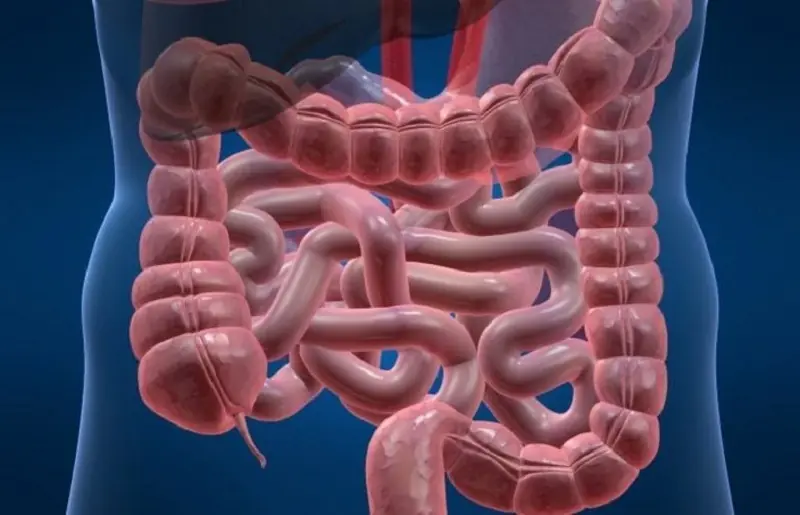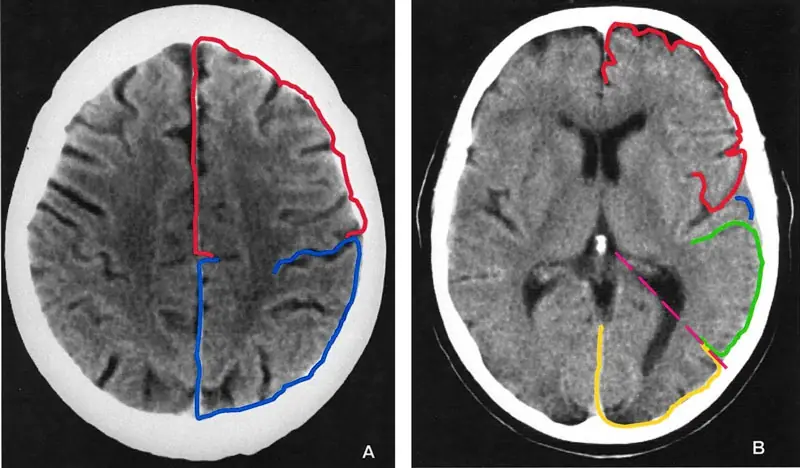
How to fall back asleep fast in the middle of the night (especially as you age)

Did you know that as we age, our bodies have a natural tendency to wake up more in the middle of the night? While this can be a completely normal part of the aging process, it becomes a real problem when you struggle to fall back asleep. You find yourself staring at the ceiling, your mind racing, watching the precious minutes of rest tick away. In this article, I’m going to share with you some of my most crucial tips and techniques, as well as four key things you must avoid, so that you can fall back asleep quickly and easily when you’re disturbed in the middle of the night. (Based on the expertise of sleep doctor, Dr. Michael Breus)
First, it’s helpful to understand why this happens, especially in seniors. Your sleep is closely tied to your core body temperature. As you get ready for bed, your temperature rises, typically peaking around 10:30 PM. After this peak, your temperature begins to drop, which is a critical signal for your brain to release melatonin—the hormone that essentially starts the engine for sleep. However, your body temperature eventually hits its lowest point and starts to rise again, usually between 1:00 and 3:00 AM. This rise in temperature shifts you into a lighter stage of sleep. Since we naturally spend less time in deep sleep as we get older, these temperature fluctuations are more likely to wake us up completely. Now, let’s talk about what you can do about it.
Key Takeaways
- Waking up at night is normal: It’s often caused by natural fluctuations in your core body temperature that shift you into a lighter sleep stage.
- Avoid anxiety triggers: Simple actions like looking at the clock, checking your phone, or turning on bright lights can increase your heart rate and anxiety, making it harder to fall back asleep.
- Lower your heart rate: To fall asleep, your heart rate generally needs to be around 60 beats per minute or lower. The goal of any sleep technique is to calm your body and mind to achieve this.
- Use relaxation techniques: Practices like 4-7-8 breathing, mental distraction exercises, and progressive muscle relaxation are powerful tools to lower your heart rate and quiet a racing mind.
- Rest is still restorative: Even if you can’t fall back asleep, lying quietly in the dark in a state of ‘Non-Sleep Deep Rest’ (NSDR) provides significant restorative benefits for your body and mind.
4 Things to AVOID When You Wake Up at Night

I’m starting with the things to avoid because, more often than not, these are the habits that are sabotaging your ability to get back to sleep. By consciously avoiding these four things, you give yourself a much better chance of drifting off again.
1. Looking at the Clock
I know this sounds trivial, but it’s a huge mistake. You wake up, your first instinct is to roll over and see what time it is. 2:47 AM. Instantly, your brain starts doing the math. “Okay, I have to be up at 6:30. That means I only have a little over three and a half hours left to sleep… if I fall asleep right now.” Suddenly, you’re not just awake; you’re anxious. You’ve put pressure on yourself to perform the act of sleeping, which is a surefire way to stay awake. This fixation on time and the remaining sleep window builds anxiety and increases your heart rate. Here’s a critical fact you must remember: to enter a state of unconsciousness (sleep), your heart rate needs to be at or below 60 beats per minute. Checking the clock does the exact opposite—it kicks your heart rate up, pushing sleep further away. Turn your alarm clock away from you or put it across the room.
2. Looking at Your Phone
This is a modern-day sleep killer. Nearly everyone sleeps with their phone on the nightstand, making it incredibly tempting to reach for it when you wake up. You might just want to check the time or see if you missed any notifications. There are two major problems with this. First, even if your phone is on its dimmest setting, the blue light emitted from the screen is a powerful signal to your brain. It essentially tells your internal clock, or circadian rhythm, that it’s daytime and time to be alert. This suppresses the production of melatonin. Second, whatever you see on your phone—a work email, a news alert, a social media post—is likely to engage your mind and, you guessed it, increase your heart rate. You’re actively stimulating your brain at the very moment you need it to be calm and quiet.
3. Getting Up to Use the Bathroom (Unless You Absolutely Have To)
I want to be very clear here: if you genuinely have to go to the bathroom, please go. Holding it will only cause discomfort and keep you awake. However, many people wake up and think, “Well, I’m awake anyway, maybe I should go just in case.” This can be incredibly disruptive. Remember the heart rate rule? Think about the physical activity involved. You go from a lying position to a seated position, then to a standing position. You walk to the bathroom, maybe turn on a light, and then walk all the way back to bed. Each of these actions requires physical effort that elevates your heart rate, putting you at a significant disadvantage when you try to fall back asleep. So, next time you wake up, take a moment to assess if you truly need to go. If not, stay put.
4. Turning on the Lights
This is often associated with getting up for the bathroom or a glass of water, and it’s one of the worst things you can do. Light is the single most powerful environmental cue that governs your circadian rhythm. Your body is designed to be awake when it’s light and asleep when it’s dark. Exposing your eyes to bright artificial light in the middle of the night sends a confusing and powerful message to your brain: “It’s time to wake up!” This can halt melatonin production and make it nearly impossible to feel sleepy again. If you must get out of bed, use a very dim nightlight in the hallway or bathroom. A great tip is to keep a glass of water on your nightstand before you go to bed, so you don’t have to make a trip to the kitchen if you’re thirsty.
4 Techniques to Help You Fall Back Asleep

Okay, so you’re avoiding all the things on the list above, but you’re still lying there wide awake. What now? Here are some powerful, proven techniques to calm your body and mind.
1. 4-7-8 Breathing
This is my number one favorite technique, and it’s incredibly simple and effective. It’s a breathing exercise that forces your body into a state of relaxation. Here’s how you do it: Gently breathe in through your nose for a count of four. Hold your breath for a count of seven. Then, slowly and completely exhale through your mouth for a count of eight. The key is to be gentle; you’re not pushing the air in and out forcefully. This method forces you to use your entire lung capacity, as opposed to the shallow breathing we often do when we’re anxious. By extending your exhale to be twice as long as your inhale, you activate the parasympathetic nervous system—your body’s “rest and digest” system. This has a direct, calming effect and helps lower your heart rate towards that magic number of 60 beats per minute.
2. Count Down from 300 by Threes
If your problem is a racing mind that you just can’t turn off, you need a distraction. This is a new form of counting sheep that is just boring and mathematically complex enough to work. Close your eyes and begin counting backward from 300, but only in increments of three. So, you’d think: 300… 297… 294… 291… and so on. Why does this work? It’s a fantastic distraction technique. It’s not so simple that your mind can do it on autopilot (like counting sheep), but it’s not so complex that it causes stress. It requires just enough mental focus to interrupt the anxious thoughts or the mental to-do list that’s keeping you awake. I often use this technique right after doing a few rounds of 4-7-8 breathing to tackle both the physical and mental aspects of restlessness.
3. Jacobsonian Progressive Muscle Relaxation
Sometimes, the tension that keeps us awake is purely physical. We lie in bed with clenched jaws, tight shoulders, and tense muscles without even realizing it. This technique teaches you to identify and release that physical stress. You’ll work your way through the body, tensing and then relaxing different muscle groups. Start with your feet. Tense your toes, curling them tightly. Hold that tension for about 30 seconds, really feeling what a tense foot feels like. Then, release completely and feel the difference. Notice the warmth and heaviness of a relaxed foot. Next, move up to your calves. Tense them, hold, and then release. You’ll progressively move up your body—thighs, glutes, abdomen, chest, arms, shoulders, neck, and face—tensing and relaxing each muscle group. This method makes you acutely aware of physical tension so you can consciously let it go.
4. Embrace Non-Sleep Deep Rest (NSDR)
This last point is perhaps one of the most important for your peace of mind. What if you’ve tried everything and you’re still not falling back asleep? The anxiety can build. But here’s the good news: you don’t have to be technically asleep to be restoring your body and mind. This is a concept called Non-Sleep Deep Rest (NSDR). It’s a state of profound relaxation you can achieve while awake. As long as you are lying down in the dark, keeping your breathing slow and steady, and maintaining a relatively low heart rate, you are still getting incredible benefits. Research suggests that for every hour you spend in a state of NSDR, you get the equivalent of about 20 minutes of restorative sleep. Knowing this can take the pressure off. Instead of thinking, “I must fall asleep,” you can change your goal to, “I will just rest quietly.” This shift in mindset alone can reduce anxiety and, ironically, make it more likely that you will eventually drift off to sleep.
Conclusion
I know that was a ton of information, but I truly hope you can take something helpful away from it. Waking up in the middle of the night doesn’t have to be a source of stress and frustration. By understanding why it happens and equipping yourself with these tools—both the things to avoid and the techniques to try—you can regain control over your rest. Be patient with yourself, find what works for you, and remember that even quiet rest is valuable.
News in the same category


Gout Patients Face Elevated Risk for Chronic Opioid Exposure

Booze, Bubbles, and Blood Sugar Trouble

If You Have Colon Polyps, These 4 Signs While Using the Toilet May Appear – See a Doctor Before It’s Too Late

From age 65, how often should you shower (and why over-washing can be harmful to your health)

What’s the Secret to Becoming a Super-Ager?

Coffee, Cookies, and Cheese Recalled From Major Retailers in Multiple States

H. Pylori Fears These 5 Foods the Most — Eat Them to Protect Your Stomach

Woman Unveils 5 Colon Cancer Symptoms You Must Never Ignore
Colon cancer is often called the “silent disease” because its warning signs are easy to dismiss. One Texas mother, Radwah Oda, is now sharing her painful journey in hopes of saving others from making the same mistake.

The Silent Killer" That Causes Brain Shrinkage — Yet Parents Still Feed It to Their Children Daily

Mother and Child D:ie From Liver Cancer — Doctors Reveal 3 Ingredients That Should Never Go Into Porridge
The story of the mother and child stands as a haunting reminder that the smallest choices in the kitchen can carry lifelong consequences.

Proven Health Benefits of Walnuts, How Many to Eat, and More (Science Based)

The Most Dangerous Foods: Unpacking the Risks of Processed Meat

Synthetic Dyes Are Out: Skittles, M&M’s, and More Go Natural by 2026

Vaseline and Egg White Face Mask: The Ultimate Anti-Aging Remedy to Look 10 Years Younger
Whether you’re looking to reduce wrinkles, lighten dark spots, or prevent acne, this mask offers a wide range of benefits that will transform your skin.

15 Honest Phrases You’ll Never Hear From a True Narcissist

Three-Day Lymphatic Cleanse To Keep You Healthy All Year Long

How Water Fasting Can Have Many Benefits

Vegetables To Clean Your Arteries And Prevent Heart Attack
News Post

NASA crew begins gruelling training for monumental mission that's not been done in 50 years

User 'terrified' after AI has total meltdown over simple mistake before repeating 'I am a disgrace' 86 times

Holy basil shown to cut stress hormone cortisol by 36% in 40 minutes

Gout Patients Face Elevated Risk for Chronic Opioid Exposure

Booze, Bubbles, and Blood Sugar Trouble

$1M Plastic Surgery TV Star’s Transformation

My Wife Had a Baby with Dark Skin – The Truth That Changed Everything

lacing these 3 things on top of the fridge will cause wealth to disappear, no matter how much you have.

Buying bananas: Wise people turn away when they see these 3 types, while foolish ones grab them just because they’re cheap

Don’t soak frozen meat in plain water. According to chefs, there’s a way to defrost it in just 5 minutes while keeping it delicious.

Water heaters have a hidden 'switch.' Any household that knows how to open it can use it for 10 years without worrying about damage or high electricity bills

Mix white salt with fabric softener, solve many household problems, and save a lot of money.

Apply this on a knife, and no matter how dull it is, it will become razor-sharp and shiny, without needing a whetstone.

Inside the washing machine, there’s a ‘small box’ with an incredibly powerful function: Not knowing how to use it is such a waste.

Why Some Women Lose Their Desire: 4 Avenues to Explore

Why should you keep some money behind your phone case?

If You Have Colon Polyps, These 4 Signs While Using the Toilet May Appear – See a Doctor Before It’s Too Late

From age 65, how often should you shower (and why over-washing can be harmful to your health)
